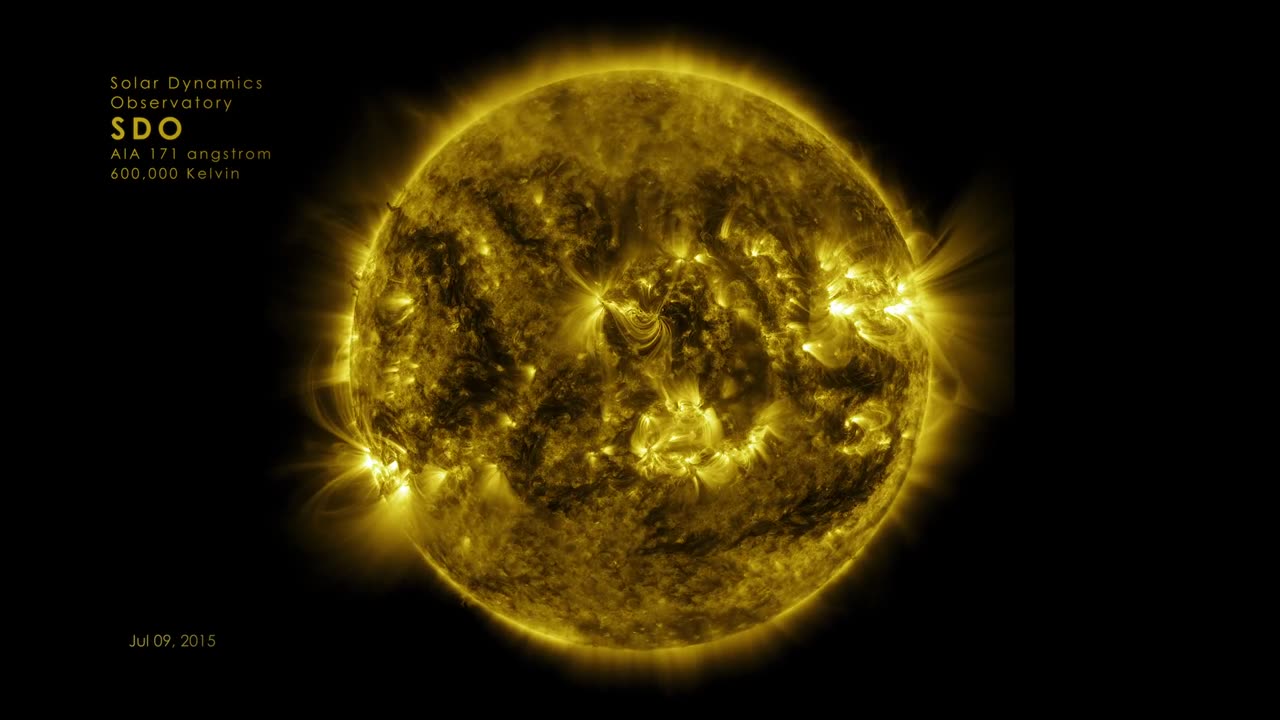Premium Only Content

"SDO's Sixth Year Unveiled in Mesmerizing Ultra HD"
The Sun, a perpetually changing celestial entity, remains under the constant surveillance of NASA's Solar Dynamics Observatory (SDO). Launched on February 11, 2010, the SDO diligently keeps an unblinking 24-hour watch over the sun's entire disk. Its vantage point offers a captivating view of the elegant choreography of solar material coursing through the sun's outer atmosphere, known as the corona. Even during its sixth year of orbit, SDO continued to deliver remarkable insights into the sun's dynamic behavior.
A mesmerizing time-lapse sequence encapsulates the entirety of SDO's sixth year in space, spanning from January 1, 2015, to January 28, 2016. The video, available in ultra-high definition 3840x2160 resolution and 29.97 frames per second on YouTube, portrays each frame as a representation of a 2-hour interval. An alternative downloadable version boasts a higher frame rate of 59.94, with each frame encapsulating a 1-hour span.
SDO's Atmospheric Imaging Assembly (AIA) plays a pivotal role in this visual spectacle. It captures an image of the sun every 12 seconds, utilizing 10 distinct wavelengths for its observations. The showcased images are based on a wavelength of 171 angstroms, which falls within the extreme ultraviolet range. This wavelength unveils solar material at approximately 600,000 kelvins (equivalent to about 1,079,540 degrees Fahrenheit). Notably, this perspective unveils the sun's 25-day rotation period with stunning clarity.
Throughout the video, an astute observer may notice subtle fluctuations in the sun's apparent size. This optical illusion is attributed to the changing distance between the SDO spacecraft and the sun itself. Despite the intricate dance of orbits—SDO's speed of 6,876 mph around Earth and Earth's orbit at 67,062 mph around the sun—the imagery remains remarkably stable and consistent.
The scientific community avidly studies these captivating images to decipher the intricate electromagnetic dynamics driving the sun's perpetual motion. This knowledge holds immense importance as solar events, such as flares and coronal mass ejections, can potentially disrupt technological infrastructure in space. Furthermore, delving into the secrets of our nearest star also yields insights into the behavior of other stars within our galaxy.
The SDO spacecraft, an impressive creation of NASA's Goddard Space Flight Center in Greenbelt, Maryland, takes center stage in this ongoing cosmic spectacle. Operated and managed by the Science Mission Directorate in Washington, D.C., SDO continues to offer a front-row seat to the awe-inspiring wonders of the sun's ever-evolving nature.
Credit for this captivating visual and auditory experience goes to NASA's Goddard Space Flight Center/Wiessinger, accompanied by the evocative musical track "Tides," available from Killer Tracks."
-
 49:18
49:18
PMG
23 hours ago $1.05 earned"Biden Regime Trying to Trigger WW III Before Trump Term Begins, and Ballots Still Being Counted?"
28.4K2 -
 1:24:27
1:24:27
Flyover Conservatives
14 hours agoWhile Trump Claimed Victory, Guess What They Were Doing Behind the Scenes... - Mel K | FOC Show
35.8K2 -
 1:33:53
1:33:53
Adam Does Movies
8 hours ago $2.14 earnedIs Dwayne Johnson A Bankable Star Anymore? + TONS Of New Movie Trailers - LIVE!
27.4K2 -
 3:00:44
3:00:44
Tate Speech by Andrew Tate
16 hours agoEMERGENCY MEETING EPISODE 91 - CASE DISMISSED
380K325 -
 2:22:54
2:22:54
WeAreChange
7 hours agoLiberal Media COLLAPSING! Begging For Forgiveness!
81.4K39 -
 17:25
17:25
TimcastIRL
15 hours agoDOJ, FBI Officials Are LAWYERING UP, FEARING Prosecutions From Matt Gaetz & Trump
76.8K163 -
 58:58
58:58
The StoneZONE with Roger Stone
8 hours agoAmerica’s Political Realignment – Democrat Gov. Rod Blagojevich Joins The StoneZONE w/ Roger Stone
45K5 -
 13:50
13:50
Tundra Tactical
7 hours ago $1.95 earnedILLINOIS Assault Weapon Ban OVERTURNED!!! (for now)
33K3 -
 54:36
54:36
LFA TV
1 day agoTrump Dance Syndrome | Trumpet Daily 11.19.24 7PM EST
58K9 -
 1:31:38
1:31:38
Redacted News
9 hours agoBREAKING! NATO ATTACKS RUSSIA & DEFIES TRUMP'S CALL FOR PEACE, PUTIN NUCLEAR RESPONSE | REDACTED
188K407